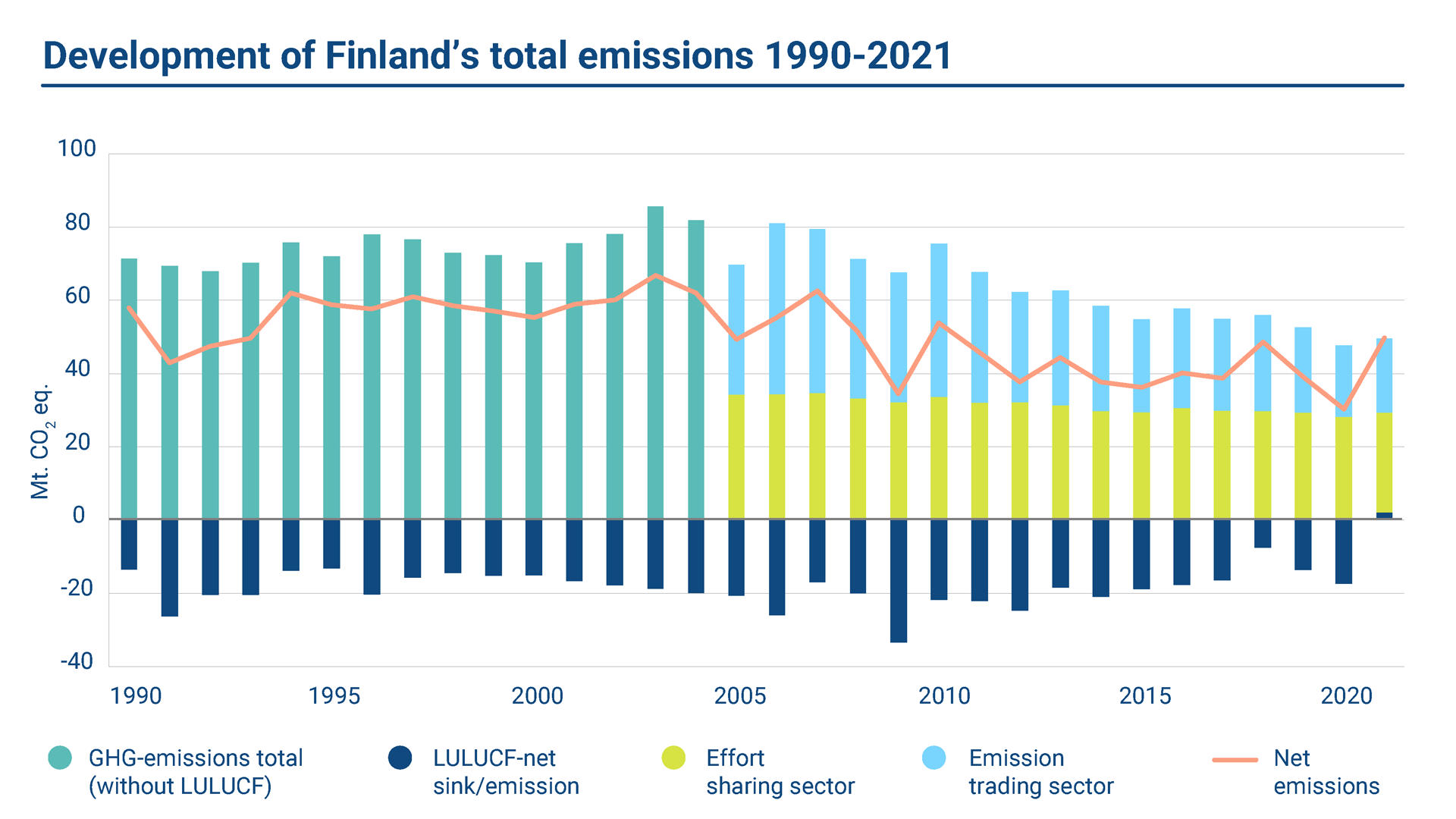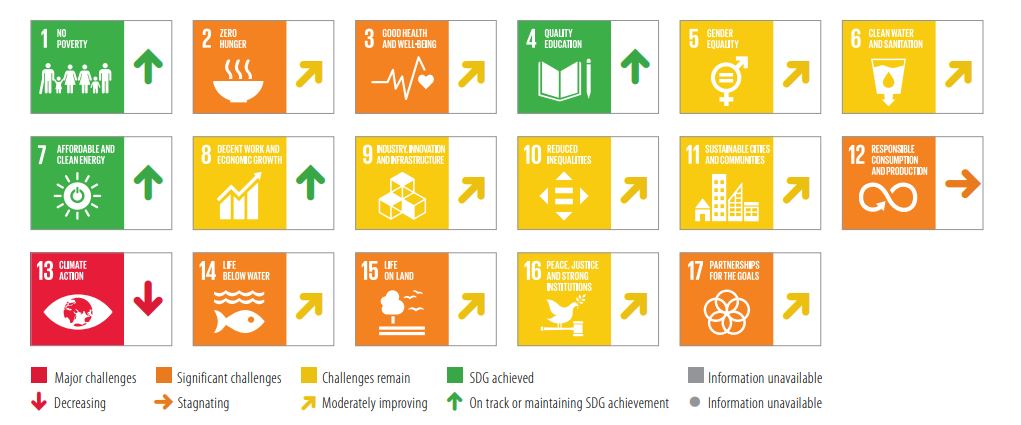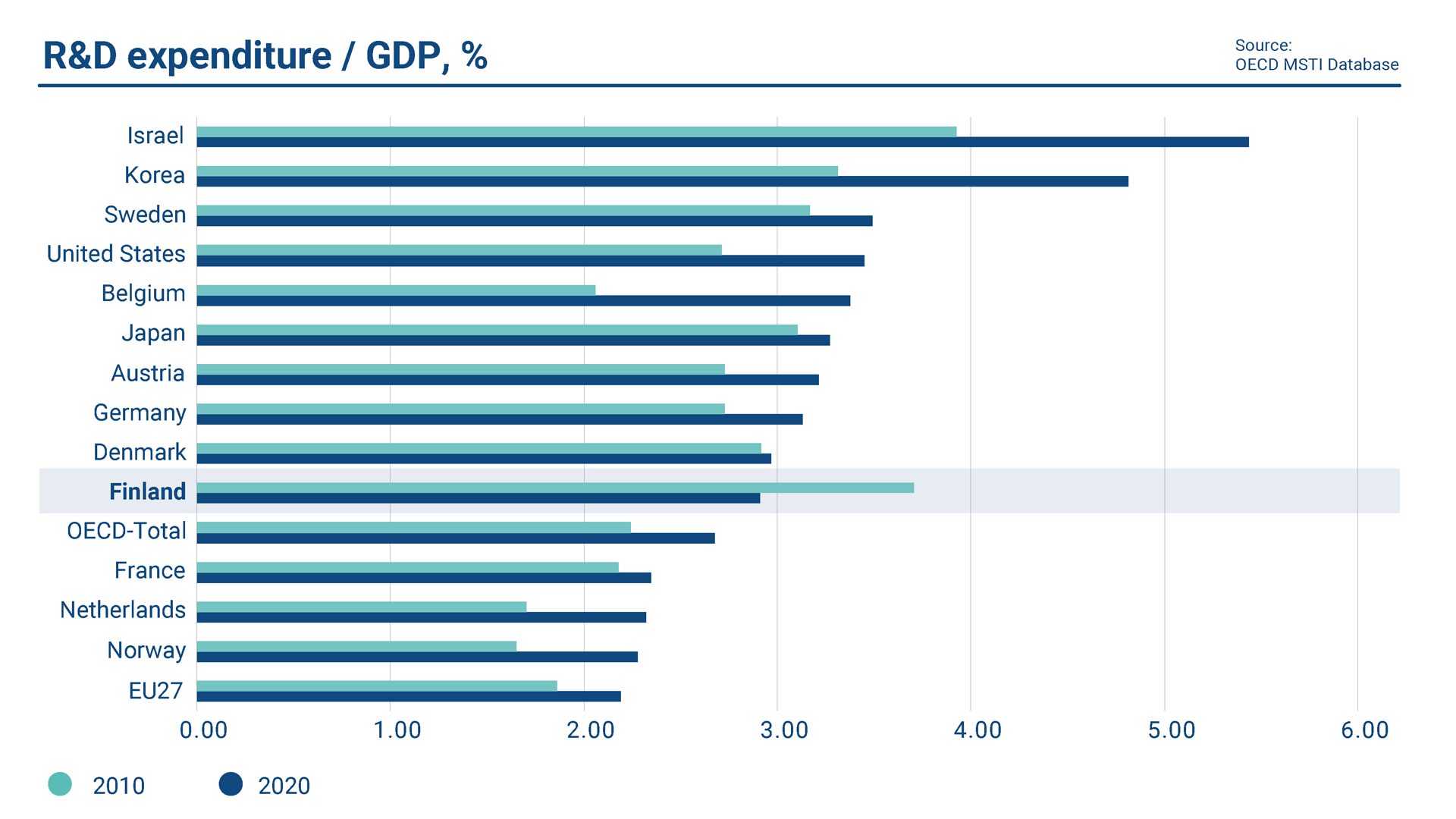In 2022 the Climate Change Act was renewed; Finland took the top spots again in the global rankings of sustainable development; and by enacting a law that gradually raises the level of R&D funding, Finland seeks to strengthen its competitiveness and productivity.
Reaching carbon neutrality in 2035 is possible but uncertain due to loss of carbon sinks
Finland aims to be carbon neutral soonest of all welfare societies. This is partly made possible by the country’s significant and diverse carbon sinks, namely forests, that account for more than 70 per cent of the country.
What are Finland’s climate targets? Here’s a short summary. The article continues after video.
Carbon neutrality means that emissions and the sinks that sequester carbon are in balance by 2035. In 2022, this target laid in law. The renewed Climate Change Act also raised the bar on Finland’s emission reductions targets: 60% by 2030, -80% by 2040 and at least -90% but aiming at -95% by 2050, compared to the levels in 1990.
To keep track of the trends in emissions and sinks and to track progress towards the emission reduction targets that have been set, the Government submits Annual Climate Reports to Parliament.
This year’s report, published in late October, revealed that while there were no major changes in Finland’s total emissions in 2021, the land use and forestry sector has become a net source of emissions for the first time in recorded history. Large harvesting volumes and slower forest growth are assumed to be the main reasons for this. The loss of carbon sinks increases Finland’s net emissions, and may increase the need for emission reductions in other sectors. Balancing the economic benefits of forestry with climate and environment protection goals are among the top policy questions ahead of parliamentary elections in 2023.
Finland’s total emissions in 2021 were about the same as in the previous year. Total emissions refer to the combined emissions of the effort sharing and emissions trading sectors. Compared to the 2005 levels, the total emissions have decreased by 32%.
Emissions from the effort sharing sector decreased in by 3% in 2021, being clearly below Finland’s emission allocation set by the European Union.
Finland’s emissions from the emissions trading sector increased by 4% in 2021. The increase was due to the higher consumption of coal compared to the previous year. The main reasons for this were the colder weather conditions and the high market price of natural gas.

Net emissions refer to the difference between emissions and removals. Carbon neutrality requires that net emissions are zero. The 2021 data is a proxy estimate. Source: Annual Climate Report 2022, Ministry of the Environment.
For more key findings and graphics, please see the Annual Climate Report 2022.
Finland ranks No. 1 in the world in sustainable development
In 2022, Finland took the top spots in the annual global and European rankings that track progress on the Sustainable Development Goals. Globally, Finland was ranked first out of 163 countries for second year running.
Of the 17 SDGs, Finland has achieved its goals related to poverty reduction, clean and affordable energy, and high-quality education. Finland is doing well when it comes to social sustainability, and is close to achieving the goals related to reducing inequality, advancing gender equality, decent work and economic growth, and peace and the rule of law.

Source: Finland Country Profile, Sustainable Development Report 2022.
There are still several goals related to ecological sustainability where Finland has work to do. These include the fight against climate change, the need for more sustainable consumption and production patterns, and halting biodiversity loss. To analyse these challenges in more detail and to seek new approaches for tackling them, the Government reformed its Sustainability Roadmap in 2022.
However, the key message of the esteemed Sustainable Development Report was that for the second year in a row, the world is no longer making progress on the SDGs. Multiple and simultaneous health, climate, biodiversity, geopolitical and military crises are major setbacks for sustainable development globally. Even rich countries face challenges is achieving some of the SDGs, as they generate negative international spillovers through unsustainable consumption, trade and supply chains.
The Sustainable Development Report 2022 is conducted annually by the UN Sustainable Development Solutions Network and the Bertelsmann Foundation.
Commitment to higher level of of R&D funding sealed by legislation
Finland aims to increase its research and development expenditure to 4 per cent of GDP by 2030. This requires increasing the public research and development spending to 1.33 per cent of GDP, assuming that the public sector accounts for one third and the private sector for two thirds of total R&D investments.
In 2022, this political commitment was enshrined in law. A new law, approved by the parliament in December, sets the annual level central government R&D spending in a way that gradually raises the public sector R&D expenditure to the targeted level of GDP by 2030, under the projected economic development. In practice, the government R&D spending will increase by approximately EUR 260 million annually until 2030. The GDP share of Finland’s R&D expenditure was 3.0% in 2021.
Productivity growth has slowed extensively in advanced economies, but in Finland the turn for slower productivity has been quite significant. At the same time, investments in research, product development and innovations have been declining in Finland for some time, even though the importance of R&D investments is widely recognised.
Perhaps this is why all parties in the Finnish parliament were unanimous that there needs to be a plan to invest in Finland’s competitiveness that extends beyond the four-year government terms. Alongside the funding law, a law for a more extensive and permanent tax incentive for R&D activities was approved in 2022.


